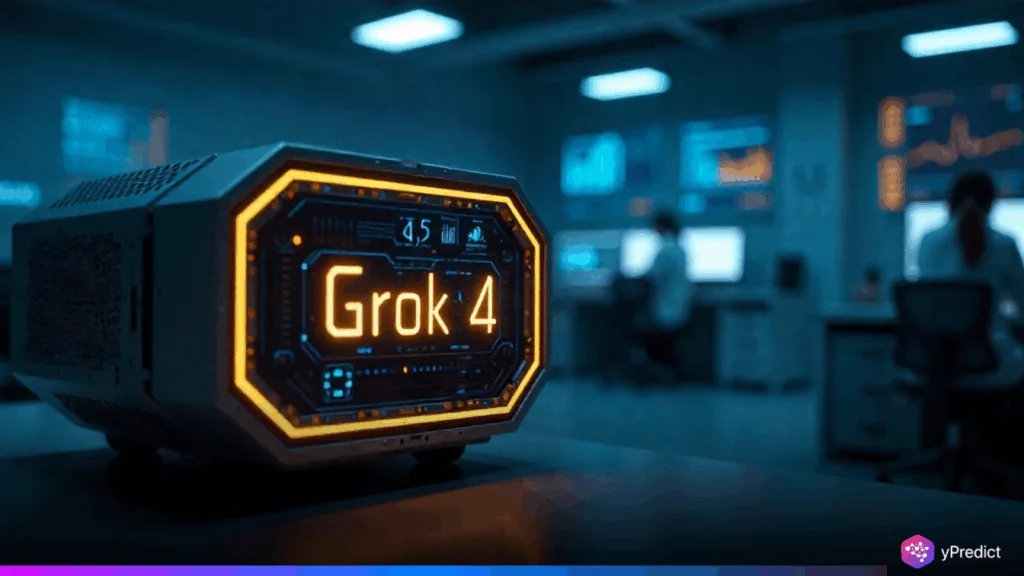
xAI’s Grok 4 has outperformed OpenAI’s newly launched GPT-5 on key AI leaderboards, despite operating with a team 70% smaller than rivals like Google and OpenAI. According to SimpleBench data, Grok 4 scored 60.5%, placing second only to Google’s Gemini 2.5 Pro at 62.4%. This narrow gap challenges the belief that massive teams and budgets are essential for AI dominance. A major upgrade to Grok 4’s PDF processing, capable of handling hundreds of pages of documents with improved accuracy, underscores its focus on real-world utility. With Grok 4.20 set to launch this month, xAI’s lean, fast-moving strategy is reshaping the competitive landscape of advanced AI development.
How xAI’s Grok 4 Beat GPT-5 With a Fraction of the Workforce and Budget
The AI race has long been defined by resource-heavy players, yet Grok 4’s success reveals a different path. xAI’s team is estimated at less than one-third the size of OpenAI’s 1,000+ employees, but its 60.5% SimpleBench score surpasses GPT-5’s performance. This leanness mirrors Elon Musk’s track record of achieving breakthroughs with focused teams at Tesla and SpaceX. A 2024 MIT study on AI scalability supports this approach, noting that bloated organizations often face diminishing returns due to bureaucracy and misaligned goals.
Grok 4 is not innovative because of brute force. An enhancement in the PDF processing power of the model, capable of parsing and understanding huge volumes of material, covers a practical user requirement that is too frequently ignored in the comparative competition of benchmarking. With the support of the Colossus supercomputer in Memphis, which was commissioned in December 2024 to have 200,000 GPUs, Grok 4 can process multi-modal and complex data en masse. This supports the view that this infrastructure has a real-life edge over competitors because it is likely to handle large task contexts better. With the entry of targeted feature development combined with high-performance infrastructure, the shape of efficiency in the AI context is changing. xAI is gaining momentum to become a force to reckon with and is competing fiercely with long-established industry giants by prioritizing effective and meaningful capabilities instead of vanity metrics.
Market Implications and the Strategic Significance of the Upcoming Grok 4.20 Release
The imminent release of Grok 4.20, expected this month, has industry watchers speculating about a potential leap to the top of the AI leaderboard. This aggressive iteration cycle contrasts with the slower update pace of Google and OpenAI, signaling xAI’s commitment to rapid innovation. Elon Musk has already teased that Grok 5, due by year-end, will be “crushingly good,” raising expectations for continued disruption.
From a market perspective, Grok 4’s success with limited resources challenges the dominance of companies valued in the tens of billions. It shows that cutting-edge AI development can thrive outside the massive enterprise model. The PDF processing upgrade also expands Grok’s appeal to researchers, analysts, and businesses requiring advanced document comprehension, an area where utility directly drives adoption.
Still, there are challenges. Reports of sluggish API performance hint at potential scaling bottlenecks. Competitors like Gemini 2.5 Pro, with a 1-million-token context window, could retain an edge in ultra-long input handling. Yet xAI’s lean operational model gives it flexibility to iterate quickly in response. If Grok 4.20 delivers both performance improvements and enhanced features, xAI could further narrow the gap with Gemini or even claim the lead, reshaping perceptions of what’s possible with smaller, agile AI teams.
Lean Innovation as a Long-Term Disruptor in the Global AI Race
Grok 4’s rise illustrates that innovation speed and focus can rival the vast resources of tech giants. By combining targeted upgrades, like advanced PDF processing, with the raw computational power of the Colossus supercomputer, xAI has crafted a model of efficiency that challenges traditional AI development norms. Grok 4.20 hopes this direction has enough traction to fill the gap to leaders such as Google’s Gemini. Should it succeed, the lean approachability of xAI may reconfigure competition in the sphere of AI and demonstrate that even a small and nimble team can become competitive and even a leader in the neighborhood of future intelligent systems.






